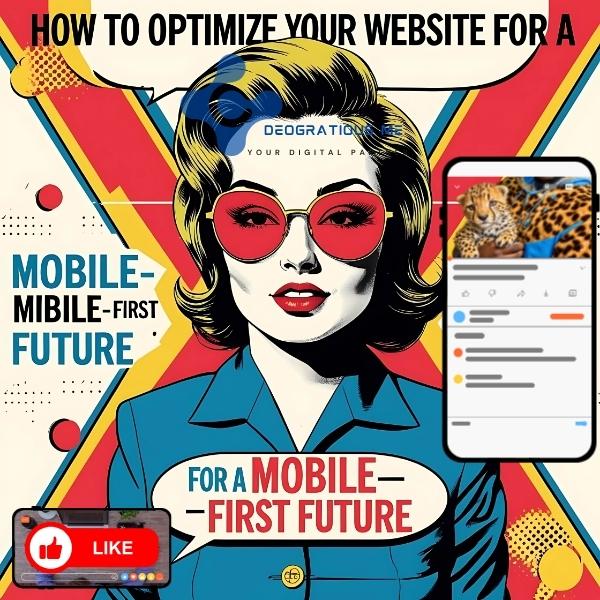Posted At: Apr 15, 2025 - 625 Views

Here's a professional, clear, and modern rewrite of your content:
How to Optimise Your Website for a Mobile-First Future
Boost Speed, Engagement & Conversions with Proven Mobile Strategies
Today’s digital landscape is mobile-dominated—smartphones account for over 64% of global internet traffic. If your site isn’t optimised for mobile-first experiences, you're losing users, rankings, and revenue.
This guide outlines 10 essential strategies to optimise your website for mobile users, highlights why mobile-first design matters, and explores what the future holds.
🔟 Essential Mobile Optimisation Strategies
1. Responsive Web Design
Poor mobile experiences drive 52% of users away. Ensure your site looks great on every screen:
- Use flexible grids and fluid images
- Add CSS media queries
- Optimise font sizes and spacing
2. Touch-Friendly Navigation
Mobile bounce rates average 51%. Make navigation effortless:
- Use thumb-friendly buttons
- Include hamburger menus
- Avoid hover-only elements
- Add an easy-to-access search bar
3. Faster Loading Speeds
53% of users abandon pages that take over 3 seconds to load. Improve performance by:
- Minimising HTTP requests
- Enabling browser caching
- Using CDNs
- Reducing redirects
4. Image Optimisation
Heavy images slow everything down. Speed things up by:
- Using WebP or compressed JPEGs
- Implementing lazy loading
- Resizing images (≤360×640px for mobile)
5. Clean & Efficient Code
Too much code can cripple performance. Streamline by:
- Removing dead/unused code
- Minifying CSS, JS, and HTML
- Splitting large code bundles
- Loading third-party scripts asynchronously
6. Local SEO Optimisation
30% of mobile searches have local intent. Attract nearby users by:
- Using location-specific keywords
- Optimising your Google Business Profile
- Generating local backlinks and reviews
7. Mobile-Friendly Content
Sixty-five per cent of users prefer easily digestible content. Enhance readability:
- Use short paragraphs and bullet points
- Write clear, concise headings
- Break up content visually
- Stick to short, punchy sentences
8. Engaging Media & Interactive Features
Video boosts engagement by 88%. Make content interactive with:
- Short videos (<60 seconds)
- Polls and quizzes
- User-submitted content
9. Progressive Web Apps (PWAs)
PWAs provide a fast, app-like experience—without a download:
- Offer offline access
- Enable push notifications
- Deliver smooth, responsive performance
10. Multi-Language Support
Go global by speaking your users' language:
- Translate key content
- Use AI-powered multilingual chatbots
- Tailor UX for cultural relevance
📲 Why Mobile Optimisation Is Critical
- Reach: Over 18.2 billion smartphone users by 2025
- Retention: 88% of users won’t return after a bad mobile experience
- Ranking: Google prioritises mobile-first indexing
- Revenue: A seamless mobile experience boosts conversions and builds trust
📈 How to Measure Mobile Performance
- Google Analytics: Monitor bounce rates, session duration, and engagement
- Core Web Vitals: Track LCP (Largest Contentful Paint), FID (First Input Delay), and CLS (Cumulative Layout Shift)
- Field & Lab Data: Combine real-world data with controlled performance testing
🚀 Looking Ahead: The Future of Mobile Optimisation
- AI Personalisation: Smarter content based on predictive behaviour
- 5G & mCommerce: Lightning-fast speeds fueling immersive shopping
- Adaptive Design: Real-time updates based on how users interact
Ready to Go Mobile-First?
Let our team help you build a faster, smarter, and future-ready site.
✅ Custom responsive design
✅ Speed and performance upgrades
✅ Cross-device SEO strategy
✅ Ongoing mobile optimisation
→ Request Your Quote Today





